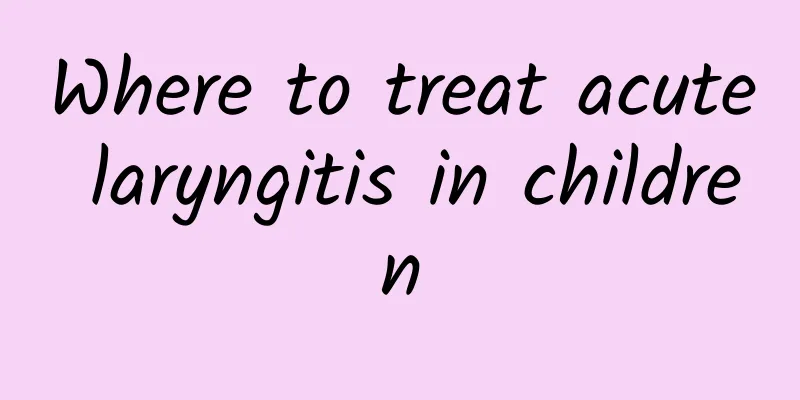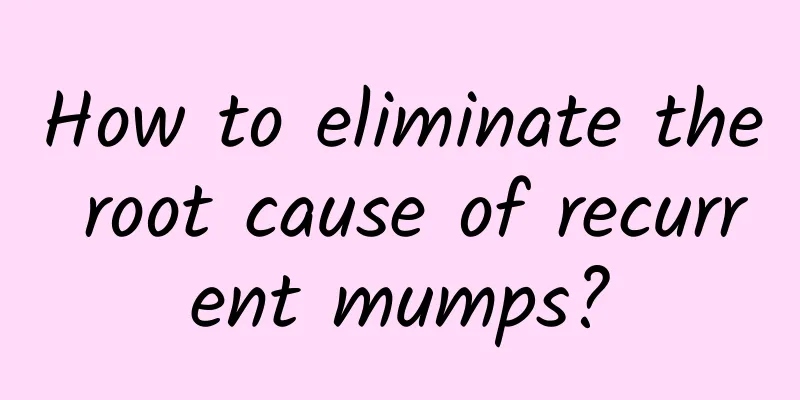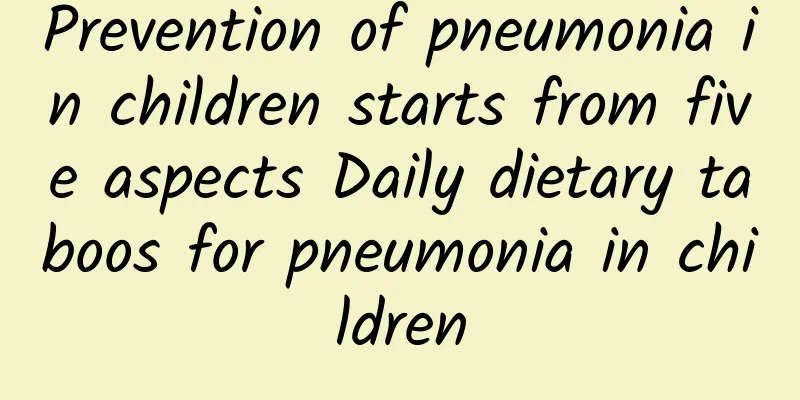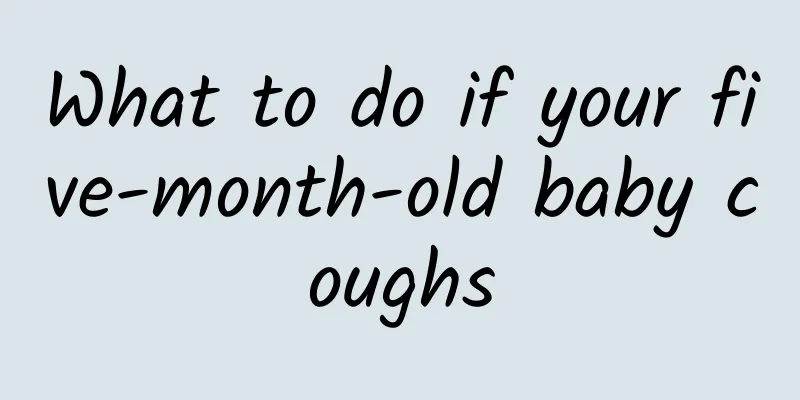Early detection of pneumonia in children
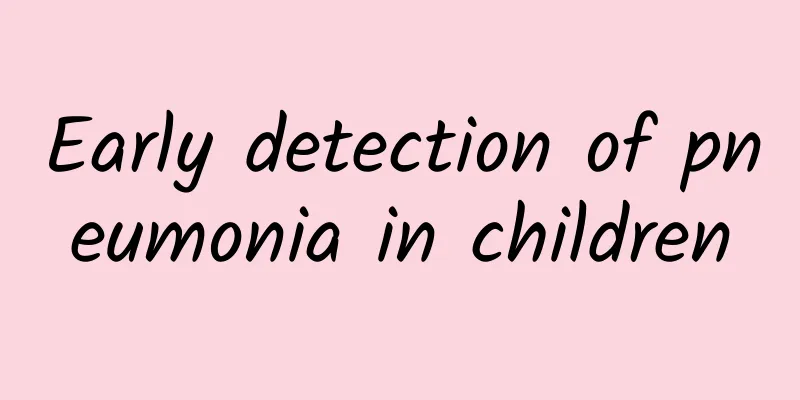
|
What are the early tests for pneumonia in children? This disease is mostly caused by upper respiratory tract infection (such as colds, tonsillitis, tracheitis or bronchitis) spreading downward to the lungs. Infants and young children have low immunity, and acute upper respiratory tract infection and bronchitis can easily spread downward, leading to pneumonia. Early detection of pediatric pneumonia To detect whether your baby has pediatric pneumonia early, you can start with "one test, two looks, three listening". One finger measurement to measure body temperature. Children with pneumonia usually have a fever, and most of them are above 38 degrees Celsius. Antipyretics can only temporarily reduce the temperature. Babies with colds also have fever, but antipyretics are more effective. Second look 1. Check whether breathing is difficult. In addition to fever, almost all pneumonias cause breathing difficulties. Coughs or wheezing caused by colds and bronchitis are generally mild and will not cause breathing difficulties. 2. Look at the mental state. When babies have pneumonia, their mental state is not good, they are often irritable, crying, or drowsy or have convulsions. 3. Look at the diet. When babies have pneumonia, their appetite often decreases significantly, they don't eat or drink milk, and they often cry and get restless because of breathlessness. Infants and young children may also have digestive tract symptoms such as vomiting, diarrhea, abdominal distension and abdominal pain. 4. Check sleep. After the baby has pneumonia, he will not sleep well and his breathing difficulties will worsen at night. Three Listening This means listening to the baby's chest. Parents can listen to the baby's chest on both sides of the spine when the baby is quiet or asleep. Listen carefully to the chest wall. If you hear "gurgling" and "gurgling" sounds, it is an important sign of lung inflammation. Nursing of children with pneumonia Dietary care: For younger babies, breastfeeding should be adhered to, antibodies are obtained from breast milk, and the ability to resist bacterial and viral infections is enhanced. In addition, cod liver oil can be added from 2 weeks after birth, which is very beneficial to enhance the ability of the respiratory system mucosa to resist diseases. Children with pneumonia often have low digestive function. If they eat greasy food, their digestive function will be affected, and the necessary nutrients will not be replenished in time, resulting in reduced disease resistance. Therefore, they should not eat pine egg yolk, crab roe, anchovies, crucian carp roe, and animal offal. If they drink milk, they should remove the upper milk film. Breastfeeding mothers should also eat less greasy food to avoid aggravating the baby's condition. Feed nutritious and easily digestible food according to the baby's age. Babies who are breastfeeding should mainly drink milk, and can drink some water appropriately. Milk can be diluted with water appropriately, and a small amount can be fed each time, and the feeding frequency can be increased. If choking occurs, the milk in the nostrils should be cleared in time. Babies who have already started to add complementary foods can eat nutritious, easily digestible, light foods, eat more fruits and vegetables, and drink more water. Daily care: Keep the indoor air fresh and the indoor temperature and humidity appropriate. Open the window for ventilation at least 2-3 times a day, and keep the room temperature at around 20℃. Do not smoke indoors, and do not allow cooking fumes or soot to enter the room, otherwise it will irritate the baby's respiratory tract and cause the baby's cough to worsen. Clear the baby's nasal secretions, turn the baby over and pat his back frequently to promote the discharge of phlegm. Strengthen exercise. Pay attention to your baby's physical exercise, take him out for more outdoor activities, and get more sun. When doing outdoor activities, pay attention to adding more clothes for your baby. During the cold epidemic, try not to take your baby to public places with many people and bad air. If there is a cold patient at home, do not let the patient come into contact with the baby. Drug care should follow the doctor's instructions to give the baby medicine and injections on time. Effective antibiotics should be taken consistently, because it takes some time for pneumonia to heal, so all antibiotics should not be stopped immediately after the fever subsides, nor should they be reduced at will, otherwise the baby's condition may recur or complications may occur. |
<<: Correct examination of pneumonia in children
>>: Treatment of pneumonia in children in China
Recommend
How to treat baby eczema? What are the precautions for baby eczema?
Baby eczema requires comprehensive treatment, inc...
What are the causes of infant eczema? There are 7 common factors that cause infant eczema.
Eczema is one of the diseases that bothers many b...
How to prevent children from catching a cold? Five preventive measures for children catching a cold
When the seasons change, children are most likely...
What is the value of jaundice in a 15-day-old baby?
First, see if your baby's jaundice needs trea...
Will jaundice come back after it subsides?
Jaundice is a symptom of a disease, and also a di...
What causes hand, foot and mouth disease in children? What causes hand, foot and mouth disease?
When it comes to hand, foot and mouth disease, ma...
Will neonatal jaundice affect intelligence? Beware of the four major hazards of neonatal jaundice
There are different types of neonatal jaundice, i...
What are the dangers of ADHD?
Parents are still reluctant to let their children...
What are the hazards of scraping for children? Beware of the 6 hazards of scraping for children
In fact, many people choose scraping in the proce...
How to deal with baby's prickly heat? 5 folk remedies for baby's prickly heat
If your baby gets prickly heat, you can use flora...
How to treat a two-month-old baby's cough and phlegm? How to treat a two-month-old baby's cough and phlegm?
The respiratory tract of a two-month-old baby is ...
Conventional treatment of diarrhea in children
Although pediatric diarrhea is a common disease i...
What are the symptoms of systemic organ failure?
Global organ failure. It sounds like all of your ...
Why does my baby cough in the middle of the night but not during the day? What are the causes of my baby's cough in the middle of the night?
Some parents may find it a bit strange that their...
The harm of pneumonia in children to the body
The combination of pneumococcus and influenza vir...
